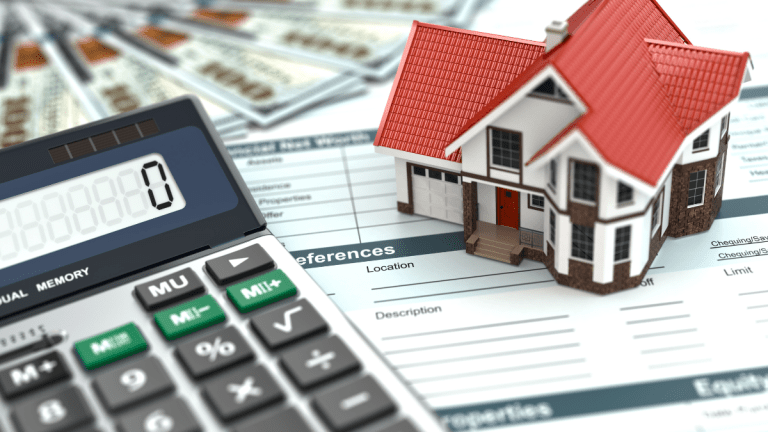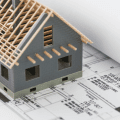In an era marked by soaring housing costs and increasing demand for flexible living spaces, Accessory Dwelling Units (ADUs) have emerged as a cost-effective solution to address these challenges.
An Accessory Dwelling Unit, often referred to as a “granny flat,” “in-law suite,” or “backyard cottage,” is a separate living unit added to an existing residential property. ADUs can be a detached structure, a converted garage, or even a basement apartment. ADUs play a crucial role in addressing housing shortages and affordability challenges in many urban areas. They offer homeowners the opportunity to maximize their property’s utility, increase rental income, and accommodate the changing needs of their families.
In this blog, we’ll delve into the cheapest way to build an ADU, covering materials, design, and regulations to help you maximize the benefits of this versatile housing option.
Garage Conversions
Garage conversions are often touted as one of the most budget-friendly methods to create an Accessory Dwelling Unit (ADU). These conversions involve repurposing an existing garage into a functional living space, offering several advantages, cost savings, and key tips for a successful transformation.
Cost-Efficient: Garage conversions leverage existing structures, saving significantly compared to new construction.
Time-Saving: They are quicker to complete, letting you enjoy your ADU sooner.
Property Value Boost: ADUs enhance property value and market appeal, making garage conversions a smart investment.
Cost Estimates for Garage Conversions
The cost of a garage conversion varies depending on factors like location, size, materials, and desired amenities. However, it generally falls within the range of $20,000 to $50,000, making it a cost-effective ADU option.
Check Regulations: Verify local zoning rules and get required permits.
Smart Design: Plan layout with space optimization, focus on insulation, lighting, and plumbing.
Budget Carefully: Set a realistic budget, accounting for unexpected expenses.
Expert Assistance: Hire qualified professionals to ensure compliance with building codes.
Building Above a Garage
Constructing an ADU above an existing garage is another economical approach to adding extra living space to your property. This method offers several advantages, cost estimates, and key tips for a successful ADU above garage construction.
Advantages of Building Above a Garage:
Space Maximization: Utilizes existing structures, optimizing available space.
Cost-Effective: Generally more economical than starting from scratch.
Quick Construction: Faster build times compared to new construction projects.
Cost Estimates for Building Above a Garage:
Costs vary depending on location, size, and finishes, but typically range from $30,000 to $80,000, making it a cost-effective ADU option.
Structural Assessment: Ensure the garage can support the additional weight.
Design Considerations: Plan layout efficiently and consider insulation, utilities, and safety.
Budget Planning: Create a comprehensive budget, accounting for potential unforeseen expenses.
Professional Input: Consult with architects or ADU Resource Centers to guarantee structural integrity and code compliance.
Using Shipping Containers
Repurposing shipping containers to create an ADU is an innovative and cost-effective approach to housing. This method offers numerous advantages, cost estimates that can be surprisingly affordable, and valuable tips for a successful container-based ADU project.
Advantages of Using Shipping Containers:
Affordability: Containers are readily available and can be a budget-friendly building material.
Speed: Conversion projects are often quicker than traditional construction.
Sustainability: Reusing containers contributes to eco-friendliness.
Cost Estimates for Using Shipping Containers
Costs vary but typically range from $10,000 to $50,000, depending on size, customization, and location, making it a cost-effective ADU option.
Tips for Building an ADU Using Shipping Containers:
Insulation: Proper insulation is crucial for temperature control.
Design: Plan for efficient layout and consider utilities and ventilation.
Permits: Ensure compliance with local building codes and regulations.
Professional Guidance: Consult with architects or contractors experienced in container conversions for a successful project.
Financing Options
Securing the necessary funds for building an Accessory Dwelling Unit (ADU) can be a critical aspect of the project. Fortunately, various financing options are available to help homeowners achieve their ADU goals.
Government Programs:
Many local and state governments offer financial assistance or incentives for ADU construction. These programs may include grants, low-interest loans, or tax incentives to encourage ADU development. Research and inquire about such opportunities in your area to potentially reduce project costs.
Research: Explore government and private options, compare terms, and check eligibility.
Assess Needs: Match financing (loan, equity, savings) with your financial situation and project requirements.
Consult Experts: Seek advice from financial advisors or local agencies.
Budget Wisely: Plan comprehensively, accounting for construction costs, financing, and potential rental income.
Cost-Saving Tips
Building an Accessory Dwelling Unit (ADU) on a budget requires strategic planning and cost-saving measures. Here’s an overview of ways to keep your ADU project affordable:
Efficient Design: Optimize space and energy use for cost-effective construction and operation.
Affordable Materials: Source budget-friendly, durable materials, including recycled options.
Labor Savings: Compare contractor quotes, consider DIY for non-technical tasks, and explore local labor.
Permit Streamlining: Reduce permit costs by understanding and adhering to local regulations.
Used Appliances: Save by considering refurbished or gently used appliances.
Recycle and Reuse: Repurpose salvaged items from your property or past projects to cut costs and environmental impact.
Pre-Fabrication: Explore prefab methods for time and labor savings.
Design Considerations
When embarking on the journey of building an Accessory Dwelling Unit (ADU), thoughtful design is paramount. Here’s an overview of key factors to consider:
Space Maximization: Efficient layout and versatile furniture save space.
Aesthetics & Cohesion: Harmonize ADU design with the main dwelling.
Accessibility: Wider doorways and ramps enhance mobility.
Natural Light: Maximize daylight for a welcoming ambiance.
Privacy: Strategically position windows and entrances.
Safety: Add smoke detectors, exits, and well-lit pathways.
Efficiency: Use energy-efficient appliances and insulation.
Permit Compliance: Align with local codes for smooth permits.
Incorporating Sustainable Design
Integrating sustainable design principles into your Accessory Dwelling Unit (ADU) not only benefits the environment but also enhances your living space. Sustainable ADUs focus on energy efficiency, cost savings, and overall eco-friendliness. Benefits include reduced energy bills, improved indoor air quality, and a smaller carbon footprint.
To create a sustainable ADU, consider using energy-efficient appliances and materials, optimizing natural light and ventilation, and installing solar panels for renewable energy.
Examples of sustainable ADU designs may feature green roofs, rainwater harvesting, and passive solar heating, all contributing to a greener and more economical living solution.
Conclusion
In this comprehensive guide, we’ve explored the most cost-effective ways to build an Accessory Dwelling Unit (ADU). From garage conversions and repurposed shipping containers to clever budgeting and sustainable design, numerous strategies empower homeowners to create affordable, functional living spaces.
ADUs offer a myriad of benefits, from extra income to versatile housing solutions, while enhancing property value. It’s time to seize this opportunity to meet your housing needs economically.
Start your ADU project today and explore the endless possibilities of this innovative and budget-friendly housing solution. Turn your property into a versatile and valuable asset with an ADU that suits your lifestyle and financial goals.







